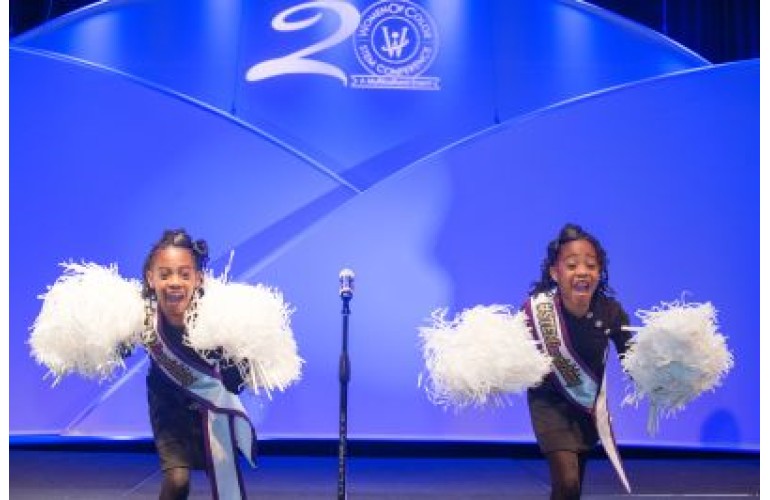 Subscribe
Subscribe- Login
-
/
Sign Up
- US Black Engineer
- >>
- Articles
- >>
- WOMEN VOICES
- >>
- Hope and Joy encourage more girls to take up STEM
|
Getting your Trinity Audio player ready...
|
#STEMISAGIRLTHING ambassadors Hope and Joy Pagan want more students who look like them in science, technology, engineering, and math (STEM) career fields.
The 11-year-old twin girls were the buzz at the Women of Color STEM Technology Recognition Luncheon, a mainstay of the annual conference, which marked 20 years of celebrating leading women scientists, technologists, engineers, and mathematicians.
The aim of having girls as ambassadors of the Women of Color STEM social campaign is to get more girls into science, technology, engineering, and math (STEM).
“Jumping into a male dominated field is not easy, but you did it. We would not have achieved it without the determination to succeed,” said emcee Sonya Sepahban, a retired General Dynamics Land Systems senior vice present and the 2012 Women of Color STEM Technologist of the Year.
“But more needs to be done to encourage STEM workers,” Sepahban added. “That’s why we’re hearing a lot about this new initiative Stem is a girl thing,” she said.
Hashtag Stem is a girl thing #Stemisagirlthing
Career Communications Group, Inc. founder of Women of Color magazine and its Women of Color STEM Conference, launched the #STEMISAGIRLTHING social campaign early in 2015.
Since then, impressions on Facebook, Twitter, Instagram, Google+, and YouTube have increased engagement, followers and subscribers over the entire 20th-year celebration.
The aim of having 11-year-old twin girls as ambassadors of the #STEMISAGIRLTHING campaign is to get more girls into science, technology, engineering, and math (STEM).
According to the National Science Foundation (NSF), girls are taking mathematics and science courses at similar rates as their male peers, with the exception of physics and engineering, and are performing well.
However, gaps in mathematics and science achievement persist for minority and low-income students.
 |
Incorporating some math into the 20th-anniversary recognition event, educator Kendall T. Harris told the audience made up of K-20 STEM students, professionals and employers about some number crunching he’d been doing.
“Twenty years of Women of Color” he noted. “I was doing some calculation and it is 240 months, 7, 300 days, and 175,000 hours of you guys making it happen,” he said.
Harris is dean at Prairie View A&M University’s College of Engineering and leads a college of more than 900 students of which 42 percent are women.
The engineering dean said his goal was to increase that number by encouraging more students to explore STEM, and to be a part of STEM education programs, so they can begin developing their interest in STEM fields.
Millennium students are faced with many more challenges than students of 20 years ago resulting in a lack of interest and preparation in the STEM fields of study, Harris notes on his college’s welcome page.
“Engineering schools must address this issue as a threat to the future of engineering education. It is my opinion that the leadership of engineering schools throughout the country must be both cognizant and equipped to develop strategic plans to overcome this shrinkage of the STEM pipeline,” he writes.
In a Prairie View A&M University paper assessing the impact of STEM enrichment programs on women of color, the university touts its success in tapping talented students of color and women by providing them with research and scholarly opportunities to pursue STEM fields of study.
The College of Engineering ranks among the top 25 U.S. Universities producing minority engineering graduates.
Watch #STEMISAGIRLTHING ambassadors on YouTube


